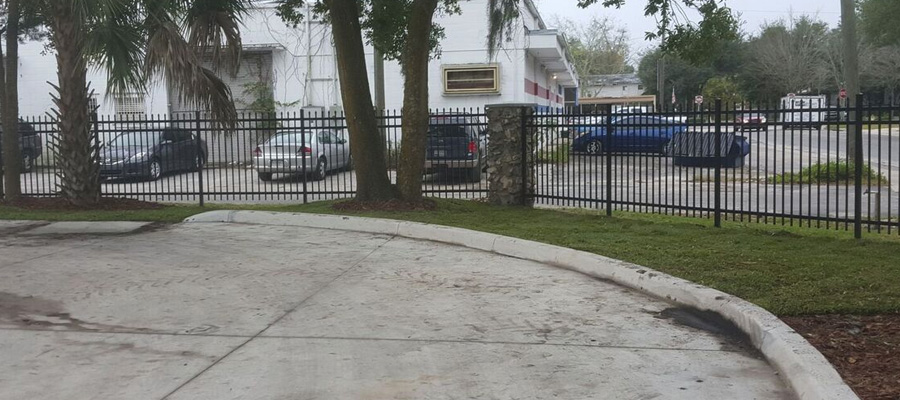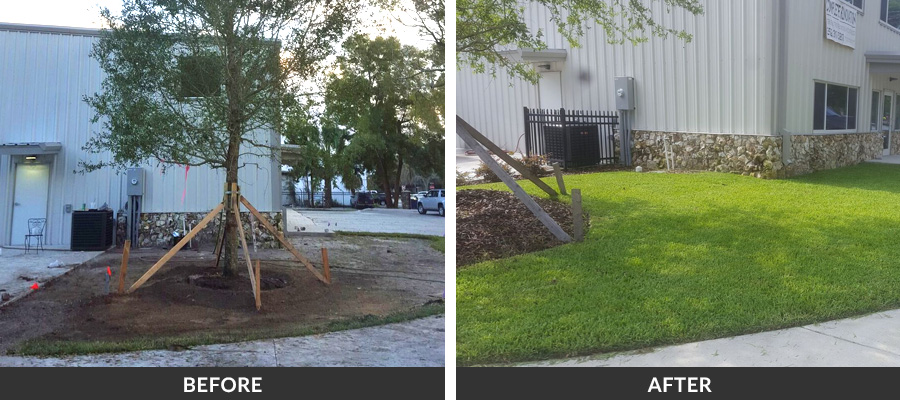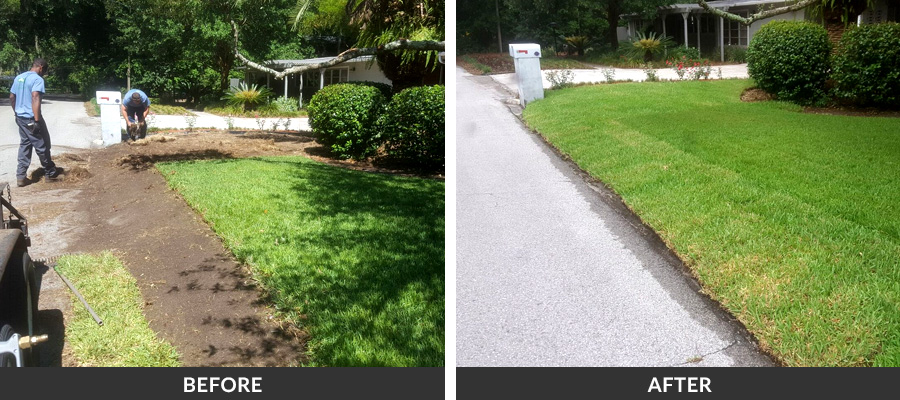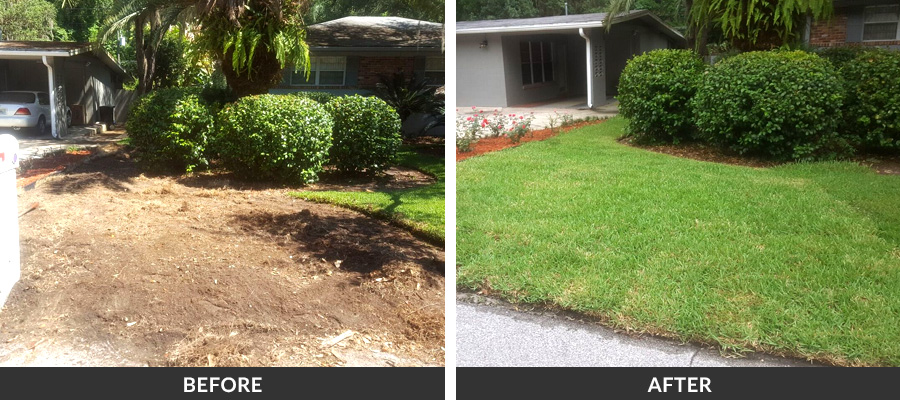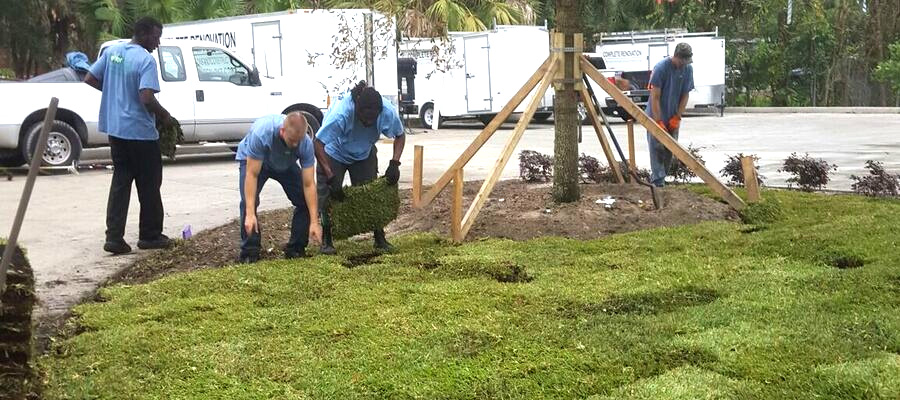Sod Install
For repair or new install, we can provide your choice of St. Augustine, Centipede, Bermuda, or Zoysia sod. We will prep the area first, which involves grading and leveling if necessary before the sod is laid. Once the sod is installed, irrigation will be checked and set for optimal watering, giving your new sod the best start possible on rooting. Now you can truly "Love the Lawn You're In."
Sod Care in Jonesville & Gainesville, FL
Once the sod is installed, it may appear to be like any other lawn. However, sod is still susceptible to drying out, disease, and weeds and caring for freshly laid sod isn’t the same as caring for grass. If the sod becomes too dry, it will have to be replaced it again.
There are several precautions you need to take to help the sod remain healthy and establish a sufficient root system.
- Refrain from mowing for 10 days
- Do not use a rake to collect excess grass clippings
- Irrigate sod to provide one inch of water daily for the first week
- Keep all animals and children off the grass for 3 weeks
- Apply fertilizer one month after installation
Sod Install In Gainesville: What to Expect
Laying sod correctly is a precise task that, if done incorrectly, can ruin your investment. As professionals, our team has experience in knowing what is required to ensure your sod becomes well established. Preparation is one of the most important factors in the process. We will remove all debris from the soil, till the soil, apply fertilizer to eliminate weeds, level the area and provide guidance on how to irrigate before the sod arrives.
When it comes to installation, our professional sod laying services can properly apply your new sod. We will lay the sod down so there are no gaps or overlaps between sections and the pieces are staggered similar to bricks. Finally, we will advise you on the proper care for your sod beginning by inspecting and providing any necessary repairs for your irrigation system, helping ensure the new lawn has adequate water.
Popular Types of Sod
Part of our service is to determine an accurate estimate of how much sod is needed, along with helping you learn about the various type of sod available. Each type of sod comes with its own set of benefits depending on individual preferences.
Centipede
Centipede sod prefers direct sunlight and is considered low maintenance. The grass should receive water every day until the roots are established, generally two weeks after installation. You can begin mowing the new lawn after the root system develops.
Zoysia
After installing zoysia sod, it needs to be irrigated twice a day for the first three days, then once a day for days four through six. Don’t water the sod on day seven. Watering during the second week should be done daily then every other day during week three. During the fourth week, you can irrigate it once a week. Wait to begin mowing until the grass is at least three inches in height which usually takes three weeks to five weeks.
Bermuda
Ideally, Bermuda grass should be placed between mid-March and November. After installation, irrigate the area daily so the top inch of the soil remains moist. Continue irrigation until the roots take hold, which is typically about 10 days. Once rooted, you can begin mowing and bag the grass clippings while mowing for the first few times.
St. Augustine
St. Augustine grass is a durable species once established with proper irrigation. St. Augustine grass requires water immediately after installation and should be watered twice a day for the first seven days, then once a day for a week. After approximately three weeks, the grass needs irrigation two to three times a week. St. Augustine grass typically takes about 14 days to establish its roots and can be mowed after the root system has matured.
Bahia
Bahiagrass is most useful in preventing erosion in poor soil areas because it has a deep root system. It’s considered low maintenance and thrives best in tropical climates, making it a perfect choice for Florida. This grass is famous for its “v” shape, and even though it may not be as aesthetically pleasing as other alternatives, it’s disease and insect resistant. Using sod to help establish Bahiagrass decreases the chance of weed growth as well.

